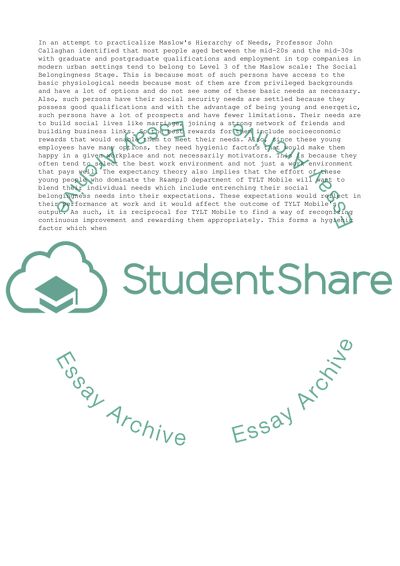Cite this document
(“Performance Related Pay in TYLT Mobile Essay Example | Topics and Well Written Essays - 2750 words”, n.d.)
Performance Related Pay in TYLT Mobile Essay Example | Topics and Well Written Essays - 2750 words. Retrieved from https://studentshare.org/management/1400944-human-resource-management-dissertation
Performance Related Pay in TYLT Mobile Essay Example | Topics and Well Written Essays - 2750 words. Retrieved from https://studentshare.org/management/1400944-human-resource-management-dissertation
(Performance Related Pay in TYLT Mobile Essay Example | Topics and Well Written Essays - 2750 Words)
Performance Related Pay in TYLT Mobile Essay Example | Topics and Well Written Essays - 2750 Words. https://studentshare.org/management/1400944-human-resource-management-dissertation.
Performance Related Pay in TYLT Mobile Essay Example | Topics and Well Written Essays - 2750 Words. https://studentshare.org/management/1400944-human-resource-management-dissertation.
“Performance Related Pay in TYLT Mobile Essay Example | Topics and Well Written Essays - 2750 Words”, n.d. https://studentshare.org/management/1400944-human-resource-management-dissertation.


